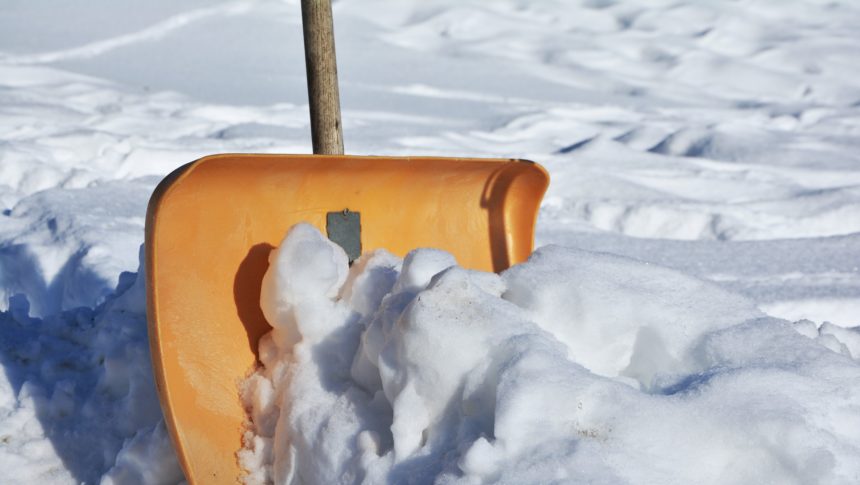Winter Survival Tips: Walkway and Driveway De-Icer!

Winter is a constant battle in the Hudson Valley and across the northern United States. It’s cold, dark and there’s usually a lot of wintery weather moving through the area. Hence you need to find the best product for you to help melt the ice and keep your walkways and driveways safe.
Choosing the right ice melt/de-icer depends on the weather and what you find most important about the product. On a budget and need to clear the ice away to get to work? Want to protect the environment and any pets you might have? Need the substrate to keep working even in the extreme cold? Check out the list below of the most common ice melts / de-icers and decide which one is best for you!
~~~~~~~~~~~~~~~~~~~~~~~~~~~~~~~~~~~~~~~~~~~~~~~~~~~~~~~~~~~~~~~~~~~~~~~~~~~~~~~~~~~~~~~~~~~~~~~~~~~~~~~~~~~~
- Rock Salt/Sodium Chloride
The tried and true option. As long as you’ve lived in a snow-laden area, you’ve known that rock salt is an inexpensive way to prevent ice and help keeps your hard surfaces safe to move on. It can be found at any hardware store in the winter and flies off the shelves when there’s a daunting forecast ahead.
Why you should use it:
If you’re on a budget or need something immediately, rock salt is cheap and works well with the typical temperatures experienced in our region (20° F).
Why shouldn’t you use it:
While rock salt is tried and true, its use results in unwanted results for your landscaping. From damage to your hard surfaces to issues with plants and decks, over time the low price begins to result in other costs. Rock salt should never be used on asphalt that is less than a year old as it deteriorates the surface much quicker in this case. Finally, along with most other examples, rock salt is lethal to pets if ingested, so keep an eye on your precious cats and dogs around the substrate.
- Calcium Chloride
The other well-known option is calcium chloride. While rock salt activates through the use of drawing heat from other sources (endothermic), calcium chloride creates its own heat when dissolving (exothermic) which speeds up the process.
Why you should use it:
Being exothermic, it can be used when it is as cold as -25° F, a much lower temperature than rock salt. It also melts the ice at a faster rate than rock salt.
Why you shouldn’t use it:
Like rock salt, calcium chloride can be rough on your landscaping through damage to your hardscapes and vegetation. It can also create problems if it comes in contact with any metal as it is a corrosive agent. Lastly it too is harmful to pets, creating irritation to skin/paws when contacted and issues if ingested.
- Magnesium Chloride
Magnesium chloride is balanced between both rock salt and calcium chloride. As it is exothermic, it can work at lower temperatures than rock salt, but only to about 0° F. With a high water concentration, it takes more to melt at the same rate as the other examples.
Why you should use it:
Magnesium chloride hits the middle ground between rock salt and calcium chloride as it works well at temperatures between the two. It also is more environmentally friendly, as more is needed to harm the surrounding environment and it is less of a risk to pets (it can still be harmful to pets, but at a lower level than the first two examples).
Why you shouldn’t use it:
While a good product, it reacts slower than the other examples thus far. Being less effective than rock salt until 20° F and less effective at melting ice than calcium chloride at all temperatures. Magnesium chloride also costs more and more needs to be used to melt ice at a decent rate creating a higher spending margin.
- Potassium Chloride
Potassium Chloride has endothermic properties and is less effective at all temperatures than the previous examples. Having not been used at the level of the other materials on the list, many consumers might not know about it.
Why you should use it:
You love the environment and your pets. It is less harmful than the aforementioned materials, but with high ingestion by pets it can still cause health issues. It is also good for gardeners, as potassium is a macronutrient for fertilization.
Why you shouldn’t use it:
It performs worse than the other materials on the list, especially since it isn’t effective below 25° F. Like the other chloride products it is corrosive to metals and with high-exposure can be bad for vegetation.
- Urea
Urea is a lot like potassium chloride with similar effectiveness and positives. Frequently confused with urine, it is actually an organic compound. It is typically used more at airports and in areas that chloride has the potential to be toxic or damaging.
Why you should use it:
You love the environment and your pets. It is less harmful in all aspects than the materials preceding it on the list.
Why you shouldn’t use it:
It doesn’t melt ice like rock salt, calcium chloride and magnesium chloride, isn’t effective below 25° F and can be harmful to local aquatic life due to run-off.
- Calcium Magnesium Acetate
Typically used in conjunction with the chloride products, this substrate has a lot in common with other products on the list.
Why you should use it:
You will most likely end up using this in a blended product. It is viable for the temperatures in the area and is low in toxicity towards plants. It lasts longer than other products on this list and when in contact with snow, it makes it easier to gain traction.
Why you shouldn’t use it:
Calcium Magnesium Acetate does not have high melting capabilities as it has an endothermic reaction. Beyond that, like urea this product could be toxic to local aquatic life. This is not a stand-alone product, but if you wanted to use it, use it prior to snow and ice or after shoveling. It is also one of the more expensive ice treatment products.
- Sand
Even though many people swear by it, sand does not work as a de-icer, as it does not react with the snow/ice to create a melting effect. Sand works best as a way to gain traction, but will not melt anything without help from natural heat.
~~~~~~~~~~~~~~~~~~~~~~~~~~~~~~~~~~~~~~~~~~~~~~~~~~~~~~~~~~~~~~~~~~~~~~~~~~~~~~~~~~~~~~~~~~~~~~~~~~~~~~~~
The choice is certainly a tough one, but now that you’re better educated, I’m sure you’ll make the best choice for you. Bookmark the blog or follow one of our social media accounts to stay up-to-date on our blog tips and tricks!
Sources: Pet Poison Helpline – Choosing the Right Deicer – Snow and Ice Management Association – Consumer Reports – Best Rock Salt and Ice Melts – Snow, Ice and Dust Control Solutions
Share This Post
Recent Posts
- Treating Your Lawn During a Drought July 15, 2017
- 7 Tips for Mowing your Lawn July 2, 2017
- 5 Great Outdoor Entertainment Ideas June 23, 2017
- Introduction into Deadheading June 19, 2017
- Pesky Pests : Japanese Beetle June 10, 2017
